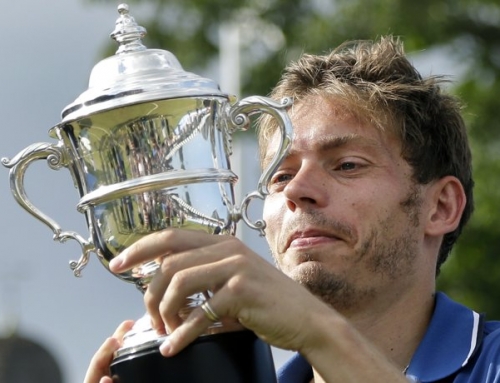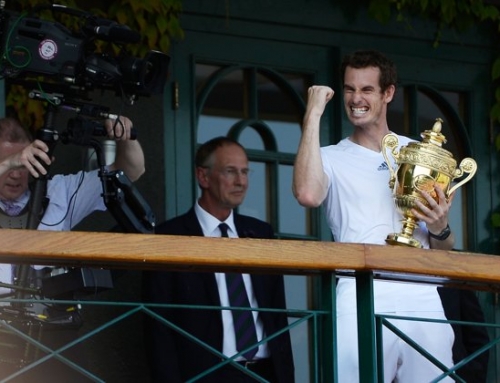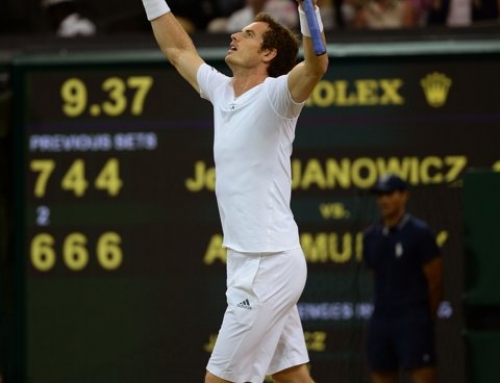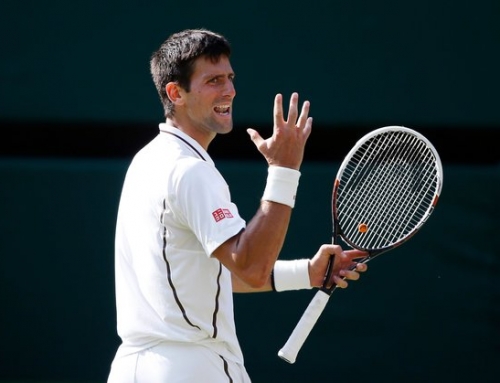Ah, who would have thought?
Roger Federer was good enough to get to the finals of the French Open, and he was scheduled to play Jo-Wilfried Tsonga who has only beaten him once, and that was due to a meltdown on Federer’s part with a 5-1 lead in the third. And he had a two sets to none lead.
Brad Gilbert, of ESPN, felt that the likely upset was going to be Mardy Fish beating Rafael Nadal. My thinking was, if anyone had the best chance, it was Tsonga. Tsonga has a big game: big forehand, big serve. He had more weapons than Lopez, Tomic, and Fish. Fish’s ground game isn’t quite imposing enough to bother Nadal. Worse, Fish didn’t have a good serving day, so that gave Rafa opportuities to break through. Even when Mardy took the third set, it didn’t seem like a momentum shift (though the announcers said it did because Fish broke twice in the third set), since Nadal tends to get his game back in shape after dropping sets. Brad was sure Tsonga had no chance against Federer.
But the reason he won was Federer’s inability to return well against Tsonga. If Federer has a weakness, it is his return game. Federer is never 0n top of the stats on return. He often plays matches where he only gets a break per set. Alas, his serve isn’t Sampras strong. He’s a placement server, and if an opponent gets serves back, Fed has to do work. Tsonga basically did a one-two punch with the serve and the big forehand as followup.
The question is: can he do it again?
Djokovic vs. Tsonga
I think this is kind of a draw. Tsonga leads the head-to-head. The first time they met was in the finals of the Australian Open in 2008 and it was Djokovic’s first Slam. Since then, Tsonga has amassed a 5-2 record over Djokovic including a win last year in the 2010 Australian Open. Djokovic should have won that, but he faded.
Djokovic has not had a solid match for two matches now. Djokovic moved the ball on Tomic well, but couldn’t use his groundies to hit winners on Tomic. He lost a set and seemed like he’d lose another (except the break was to 3-2, and Djokovic won the next 4 games). They played a tight 4 sets with Djokovic getting a break late in the fourth. Djokovic was also pushed to four sets against by Baghdatis two rounds ago although he had an easy time with Llodra. Llodra plays such a different style that good players can win against Llodra more easily than a player like Baghdatis.
I’m going to lean ever so slightly to Djokovic, who has done well against Tsonga in Slams (including his loss in the Australian Open). I believe his return game can make inroads against Ts0nga. If he wins, it should up the level of confidence in his game. He played much better in the French, I felt, and is still working his way to playing his best, so this does give Tsonga a good chance at the upset. The one thing going for Djokovic is Tsonga played a 5-setter, admittedly, one of the quickest 5-setters ever played.
Nadal vs. Murray
Last year, Murray played Nadal in the semis. Of all the players that Nadal faces, Murray is the one that has a “Nadal plan”. He plays Nadal in a certain way which he doesn’t do against other players. The big problem for Murray is that, in the biggest moments, he’s often unable to come up with the biggest shots. Murray was oh-so-close to winning the third set tiebreak against Roger Federer in the 2010 Australian Open final. He missed a bit too much against Rafa in the French Open semis. The reason players like del Potro sometimes does better against Rafa is because he plays within himself. When Delpo hits hard, he does it becaue that’s how he plays against everyone, not just Rafa, and so it’s in his comfort zone.
But credit Murray for being an intelligent player who has come up with ideas to play Nadal. In the 2008 US Open, Murray used a short crosscourt forehand to Nadal’s backhand to get Nadal to hit a shot up the middle, which he attacked inside out to Nadal’s forehand. Nadal used to struggle moving to his left to get wide forehands. He’s improved this part of his game (or he’s adjusted to prevent opponents from hitting this shot).
Murray took a set off of Nadal in the semis of Monte Carlo, but then, Nadal upped his pace, and Murray hit way too many errors to make a dent in the third set. Murray even had Nadal playing passive tennis in the semis of the ATP World Tour Final last year, but Nadal turned on the pace in the third set tiebreak. This match turned on two tiebreaks neither of which Murray won. Because Murray generally plays a passive style, he’s not used to hitting these big shots time and again at the biggest moments. But he’s somewhat close.
Still, until I see it, I have to give the edge to Nadal. Had you asked me who I thought was favorite to win Wimbledon, I’d probably have said Nadal before the tournament started. I was planning to write a post on why Djokovic would win—and I think he still has a fair shot of reaching the final, but he’s going to have to work for it, and so my confidence in Djokovic has dropped some. Still, I’m waiting for Murray to come up with something new. I hope it’s good enough to beat Nadal, but at this point, you still have to favor Nadal.
Finalists: Djokovic vs. Nadal







